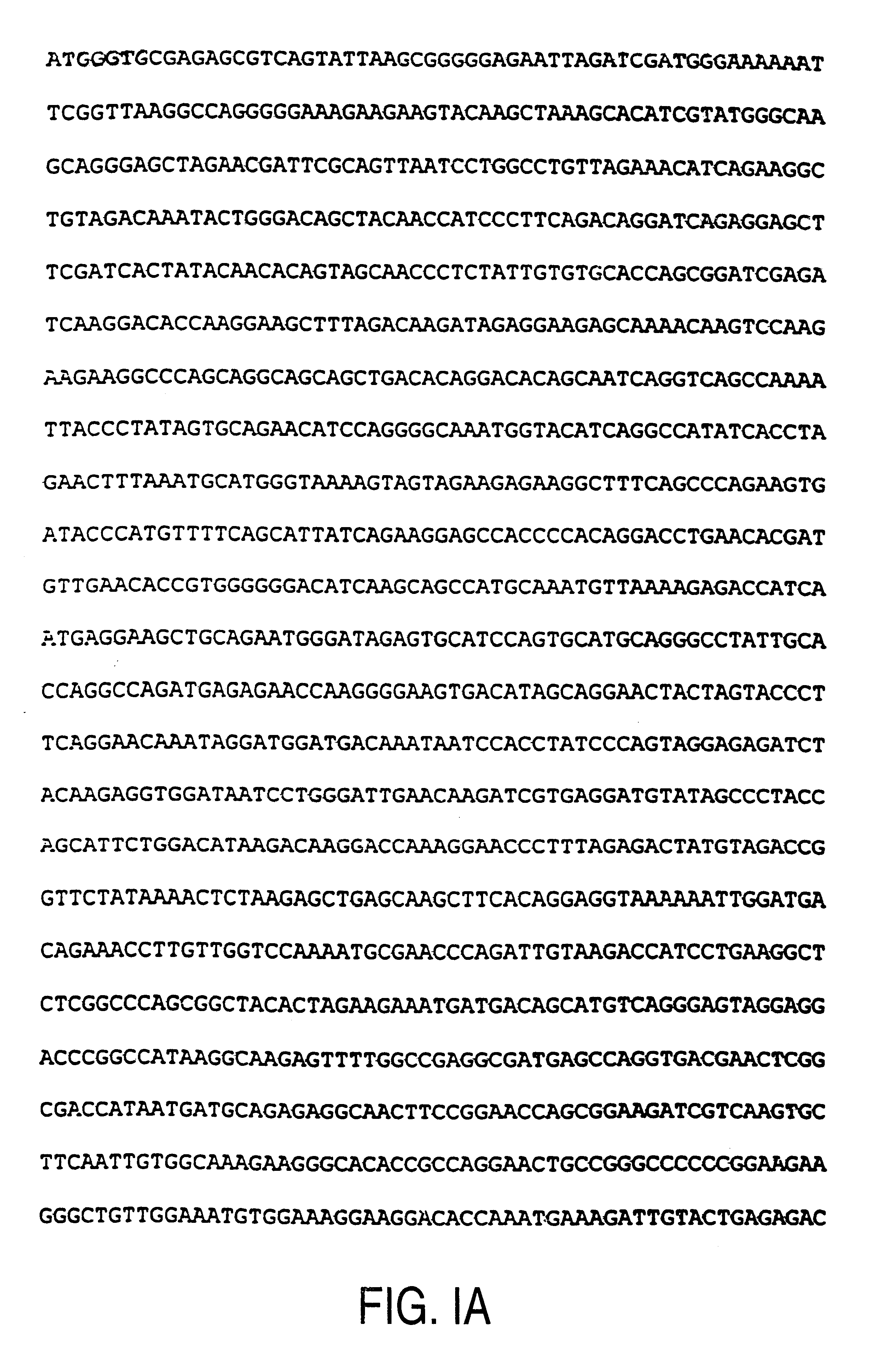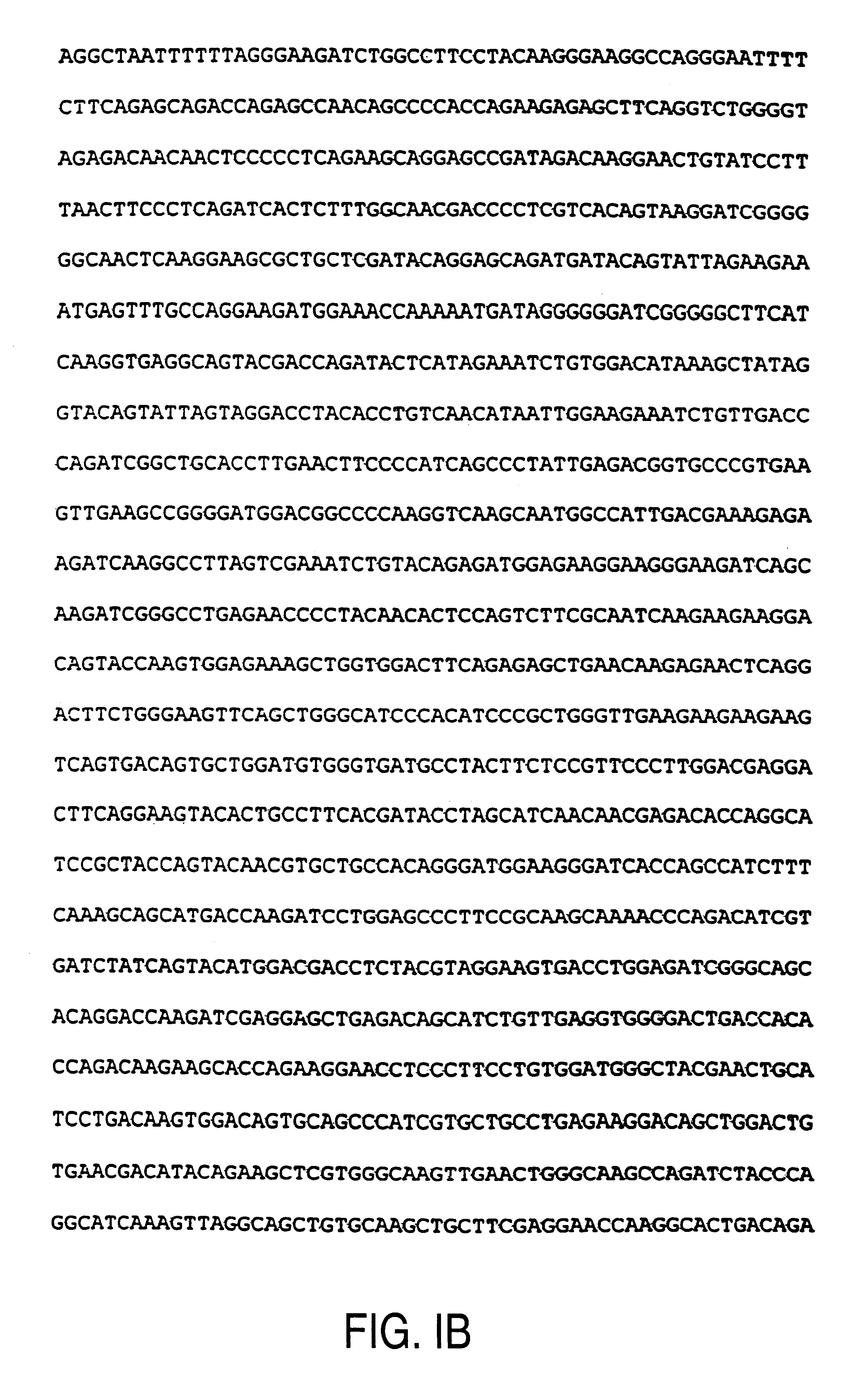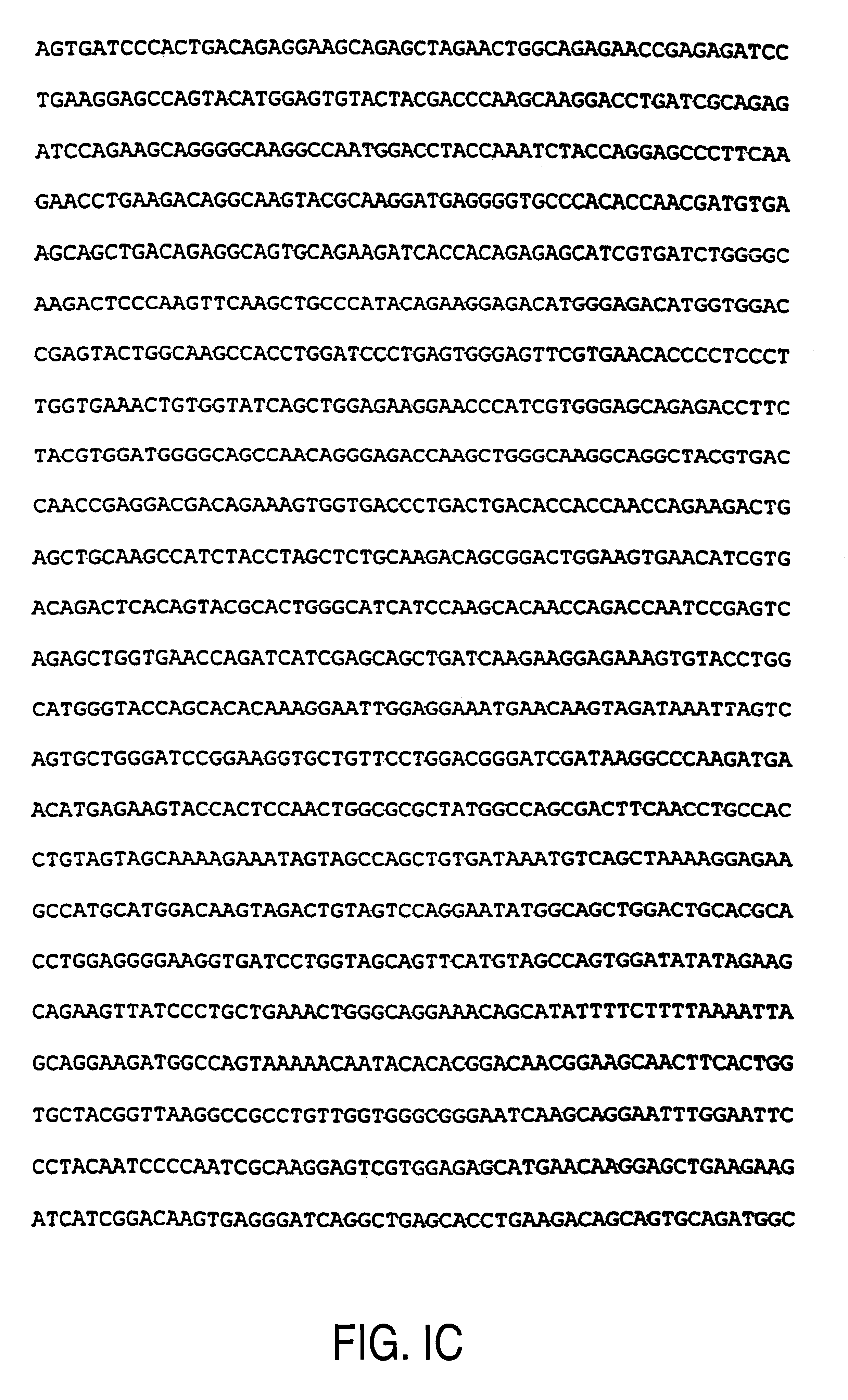Molecular clones with mutated HIV gag/pol, SIV gag and SIV env genes
a gene sequence and gene technology, applied in the direction of viruses, vectors, depsipeptides, etc., can solve the problems of lentiviruses not being able to efficiently transduce truly quiescent cells, limiting their use for in vivo gene transfer in nonproliferating cells, and safety concerns
- Summary
- Abstract
- Description
- Claims
- Application Information
AI Technical Summary
Benefits of technology
Problems solved by technology
Method used
Image
Examples
example 1
Rev-Independent HIV-1 Gag / Pol Molecular Clone
FIG. 1 shows the DNA sequence of a Rev-independent HIV-1 gag / pol molecular clone. This DNA sequence shown encodes the complete Gag and Pol of HIV-1 and can be expressed in a Rev-independent manner when operably linked to a promoter. The Rev-independent gag sequence was described in U.S. Pat. Nos. 6,174,666, 5,972,596 and 5,965,726 and the Rev-independent pol sequence was generated by eliminating the inhibitory / instability sequences using the methods described in those,patents. Others have reportedly made Rev independent gag sequences by optimizing codon usage for human cells (see, e.g., WO 98 / 34640).
FIG. 2 shows an alignment of the sequence of the wild-type and mutated pol region in pCMVgagpolBNkan. Position #1 in the figure is position 2641 in plasmid pCMVgagpolBNkan.
The elimination of INS in gag, pol and env regions allows the expression of high levels of authentic HIV-1 structural proteins in the absence of the Rev regulatory factor of...
example 2
Rev-Independent SIV Gag Molecular Clone
FIG. 3 shows the DNA sequence of a Rev-independent SIV gag molecular clone, SIVgagDX. FIG. 4 shows the comparison of wild type (WT) and mutant (SIVgagDX) sequences. The wild type SIV sequence is from Simian (macaque) immunodeficiency virus isolate 239, clone lambda siv 239-1 (GenBank accession No. M33262).
example 3
Rev-Independent SIV Env Molecular Clone
FIG. 16 shows a schematic diagram, and FIG. 17 shows the DNA sequence, of the "env-coding" vector CMVkan / R-R-SIVgp160CTE, which is an example of a vector comprising a mutated lentiviral env gene sequence which is capable of being expressed independently of any SIV or HIV regulatory factors. "CMV" denotes the cytomegalovirus promoter, "SRV-CTE" denotes the constitutive transport element (CTE) of Simian Retrovirus Type 1; "all-STOP" denotes a sequence providing translational stops in all three reading frames; "BGH terminator" denotes the bovine growth hormone polyadenylation signal. Other posttranscriptional control elements can be used instead of the indicated SRV-CTE, for example the one described by Pavlakis and Nappi, PCT / US99 / 11082, filed May 22, 1999, which was published as WO 99 / 61596 on Dec. 2, 1999 (and which is incorporated herein by reference).
As mentioned previously above, such a vector encoding a lentiviral env gene may be used if it...
PUM
 Login to View More
Login to View More Abstract
Description
Claims
Application Information
 Login to View More
Login to View More - R&D
- Intellectual Property
- Life Sciences
- Materials
- Tech Scout
- Unparalleled Data Quality
- Higher Quality Content
- 60% Fewer Hallucinations
Browse by: Latest US Patents, China's latest patents, Technical Efficacy Thesaurus, Application Domain, Technology Topic, Popular Technical Reports.
© 2025 PatSnap. All rights reserved.Legal|Privacy policy|Modern Slavery Act Transparency Statement|Sitemap|About US| Contact US: help@patsnap.com



